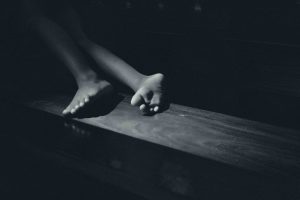 Falls are a serious problem among elderly residents of Carlsbad nursing homes. For seniors who live at home, a dangerous fall can mean the difference between being able to live independently and requiring daily care at a skilled nursing facility, according to the National Council on Aging (NCOA). Slips and falls, as well as falls from heights, often result in permanent disabilities and sometimes death among elderly patients. As such, it is important for researchers, physicians, and caregivers to continue seeking out new ways of preventing falls in nursing homes and assisted-living facilities across Southern California and throughout the country. In some situations, a serious fall may be the result of nursing home neglect or nursing home negligence.
Falls are a serious problem among elderly residents of Carlsbad nursing homes. For seniors who live at home, a dangerous fall can mean the difference between being able to live independently and requiring daily care at a skilled nursing facility, according to the National Council on Aging (NCOA). Slips and falls, as well as falls from heights, often result in permanent disabilities and sometimes death among elderly patients. As such, it is important for researchers, physicians, and caregivers to continue seeking out new ways of preventing falls in nursing homes and assisted-living facilities across Southern California and throughout the country. In some situations, a serious fall may be the result of nursing home neglect or nursing home negligence.
According to a recent public radio report, a small sensor developed by researchers at Carnegie Mellon University may help to reduce the rate of falls among older adults.
Falls are Common in Nursing Homes and Assisted Living Facilities
As we mentioned, falls happen much too often in nursing homes and assisted living facilities, and most of these falls are preventable. According to the report, approximately one in five seniors in a facility will “fall on a regular basis.” In the whole senior population, experts believe that about one-third of people aged 65 and older fall at least once each year. According to Jane Cauley, a University of Pittsburgh epidemiologist, “falls cost the health care system about $50 billion in 2015,” and those costs “hurt both the health care system and the patient’s quality of life.”
Those falls occur in a variety of ways, from a patient falling from a chair or a bed, or from a patient’s shoes getting stuck on rough flooring. Even in skilled nursing facilities in which rugs have non-slip mats and clutter is cleared from any walkways, seniors can still suffer fall-related injuries. Here is where the CMU research on sensors comes in.
Sensors May be Able to Reduce Elderly Falls
How can a sensor prevent an elderly nursing home patient from falling? The sensor picks up vibrations that occur when a person takes a step. Hae Young Noh, one of the CMU researchers working on the sensor, explained how such vibrations can let us know when someone’s footsteps might not be normal and may signal that they are going to fall: “[W]hen people walk around we sense the vibration caused by each footstep, to identify and localize and get different patterns out of it.” Accordingly, “when someone is about to fall, their walking pattern changes; they might take two quick steps in a row.”
Noh clarified that a person’s footsteps are similar to their fingerprints in that each person has his or her own pattern of walking. By using sensors to identify an individual’s walking patterns (when the person is not falling), those sensors then may be able to identify a change in the pattern that could signal a fall.
The sensors are designed to be “attached to the floor or a piece of furniture,” Noh clarified, so it’s also possible to tell when somebody is trying to get out of bed, which in some facilities requires caregiver assistance.” When a sensor identifies a shift in a person’s movement, it can signal a caregiver to help.
Contact a Carlsbad Nursing Home Neglect Lawyer
Falls can be devastating for any senior, and sometimes they result from nursing home negligence. If you have questions about filing a claim, a Carlsbad nursing home negligence lawyer can assist you. Contact the Walton Law Firm to learn more about how we can help.
See Related Blog Posts:
Fall-Related Deaths and Nursing Home Negligence
Teaching Seniors in Encinitas to Avoid Injuries in Falls
(image courtesy of jyotirmoy-gupta)
 Southern California Nursing Home Abuse Lawyer Blog
Southern California Nursing Home Abuse Lawyer Blog








